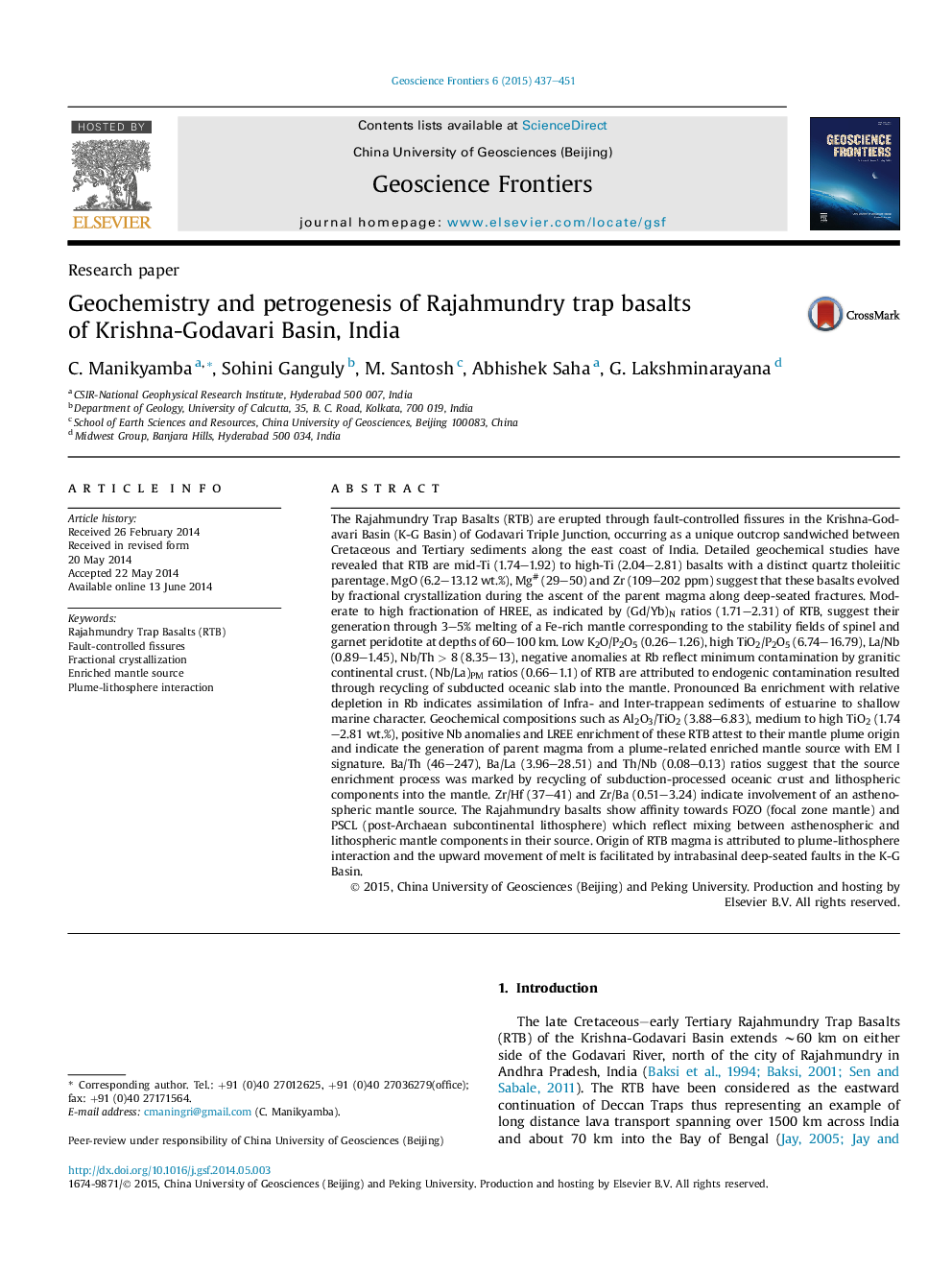| کد مقاله | کد نشریه | سال انتشار | مقاله انگلیسی | نسخه تمام متن |
|---|---|---|---|---|
| 4681621 | 1348862 | 2015 | 15 صفحه PDF | دانلود رایگان |
• Lava flows produced by fractional crystallization of parent magma from an enriched mantle source.
• Geochemical signature of plume-derived melts and lithospheric mantle.
• Fault-controlled, in situ eruptions in an intrabasinal tectonic setting.
The Rajahmundry Trap Basalts (RTB) are erupted through fault-controlled fissures in the Krishna-Godavari Basin (K-G Basin) of Godavari Triple Junction, occurring as a unique outcrop sandwiched between Cretaceous and Tertiary sediments along the east coast of India. Detailed geochemical studies have revealed that RTB are mid-Ti (1.74–1.92) to high-Ti (2.04–2.81) basalts with a distinct quartz tholeiitic parentage. MgO (6.2–13.12 wt.%), Mg# (29–50) and Zr (109–202 ppm) suggest that these basalts evolved by fractional crystallization during the ascent of the parent magma along deep-seated fractures. Moderate to high fractionation of HREE, as indicated by (Gd/Yb)N ratios (1.71–2.31) of RTB, suggest their generation through 3–5% melting of a Fe-rich mantle corresponding to the stability fields of spinel and garnet peridotite at depths of 60–100 km. Low K2O/P2O5 (0.26–1.26), high TiO2/P2O5 (6.74–16.79), La/Nb (0.89–1.45), Nb/Th > 8 (8.35–13), negative anomalies at Rb reflect minimum contamination by granitic continental crust. (Nb/La)PM ratios (0.66–1.1) of RTB are attributed to endogenic contamination resulted through recycling of subducted oceanic slab into the mantle. Pronounced Ba enrichment with relative depletion in Rb indicates assimilation of Infra- and Inter-trappean sediments of estuarine to shallow marine character. Geochemical compositions such as Al2O3/TiO2 (3.88–6.83), medium to high TiO2 (1.74–2.81 wt.%), positive Nb anomalies and LREE enrichment of these RTB attest to their mantle plume origin and indicate the generation of parent magma from a plume-related enriched mantle source with EM I signature. Ba/Th (46–247), Ba/La (3.96–28.51) and Th/Nb (0.08–0.13) ratios suggest that the source enrichment process was marked by recycling of subduction-processed oceanic crust and lithospheric components into the mantle. Zr/Hf (37–41) and Zr/Ba (0.51–3.24) indicate involvement of an asthenospheric mantle source. The Rajahmundry basalts show affinity towards FOZO (focal zone mantle) and PSCL (post-Archaean subcontinental lithosphere) which reflect mixing between asthenospheric and lithospheric mantle components in their source. Origin of RTB magma is attributed to plume-lithosphere interaction and the upward movement of melt is facilitated by intrabasinal deep-seated faults in the K-G Basin.
Figure optionsDownload as PowerPoint slide
Journal: Geoscience Frontiers - Volume 6, Issue 3, May 2015, Pages 437–451
